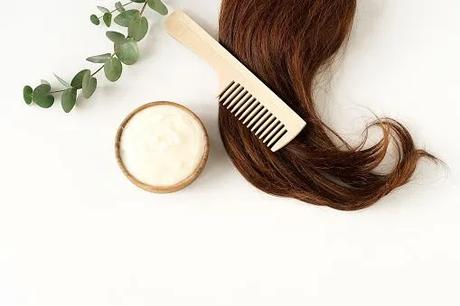Monsoon season provides much-needed relief from the blistering summer heat, but it also presents unique hair care challenges. Increased humidity, frequent rain showers, and wet circumstances can cause a considerable rise in hair loss. Understanding the reasons for monsoon hair fall and implementing effective solutions can help you keep your hair healthy and strong throughout the rainy season.

Causes of Hair Fall During Monsoon
1. Increased Humidity
How It Affects Hair: High humidity levels during monsoon make hair more porous and prone to frizz. The excess moisture in the air weakens the hair shaft, making it more susceptible to breakage and hair fall.
2. Damp Scalp
How It Affects Hair: A constantly damp scalp can become a breeding ground for bacteria and fungi, leading to infections like dandruff and scalp irritation. These conditions weaken the hair roots, causing increased hair fall.
3. Frequent Washing
How It Affects Hair: Many people tend to wash their hair more frequently during monsoon to remove the dirt and grime accumulated due to rain. However, excessive washing strips the scalp of its natural oils, leading to dryness and hair breakage.
4. Rainwater Exposure
How It Affects Hair: Rainwater is often acidic and contains pollutants that can damage the hair cuticle, making it rough, dry, and prone to breakage. Prolonged exposure to rainwater can weaken the hair, resulting in increased hair fall.
Solutions to Prevent Hair Fall During Monsoon
1. Keep Your Scalp Dry
Solution: Ensure your scalp is dry after getting wet in the rain. Use a microfiber towel to gently pat your hair dry. Avoid tying up wet hair as it can trap moisture and lead to scalp infections.
2. Use a Gentle Shampoo
Solution: Choose a mild, sulfate-free shampoo to cleanse your hair without stripping it of its natural oils. Limit hair washing to 2-3 times a week to maintain a healthy scalp balance.
3. Condition Regularly
Solution: Use a hydrating conditioner after every shampoo to keep your hair moisturized and prevent dryness. Consider using a deep conditioning treatment once a week for added nourishment.
4. Apply Anti-Fungal Treatments
Solution: If you have a damp scalp or are prone to dandruff, use an anti-fungal shampoo or treatment to keep fungal infections at bay. Tea tree oil and neem-based products are effective natural remedies for scalp health.
5. Avoid Heat Styling
Solution: Minimize the use of heat-styling tools like hairdryers, straighteners, and curling irons. Opt for air drying and natural hairstyles to reduce heat damage and breakage.
6. Protect Your Hair from Rainwater
Solution: Wear a hat or carry an umbrella to protect your hair from getting wet in the rain. If your hair does get wet, rinse it with clean water as soon as possible to remove any pollutants and prevent damage.
7. Maintain a Healthy Diet
Solution: A balanced diet rich in vitamins and minerals is essential for healthy hair. Include foods high in protein, iron, and omega-3 fatty acids to strengthen your hair from within.
8. Stay Hydrated
Solution: Drink plenty of water to keep your body and scalp hydrated. Proper hydration helps maintain the natural moisture balance of your scalp, reducing dryness and hair fall.
Conclusion
Hair fall during monsoon is a common issue, but with the right care and attention, it can be managed effectively. By understanding the causes and implementing these solutions, you can keep your hair healthy and strong throughout the rainy season. Remember, consistency is key, so make these practices a part of your regular hair care routine to see the best results.

